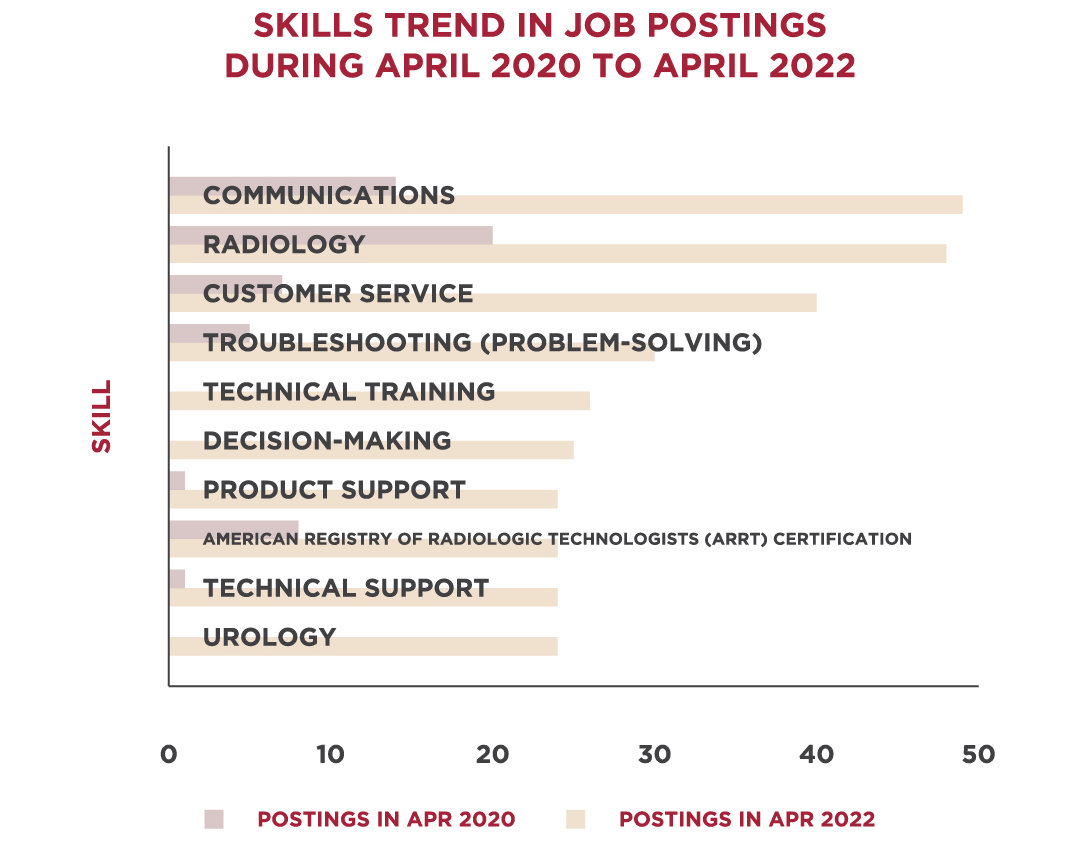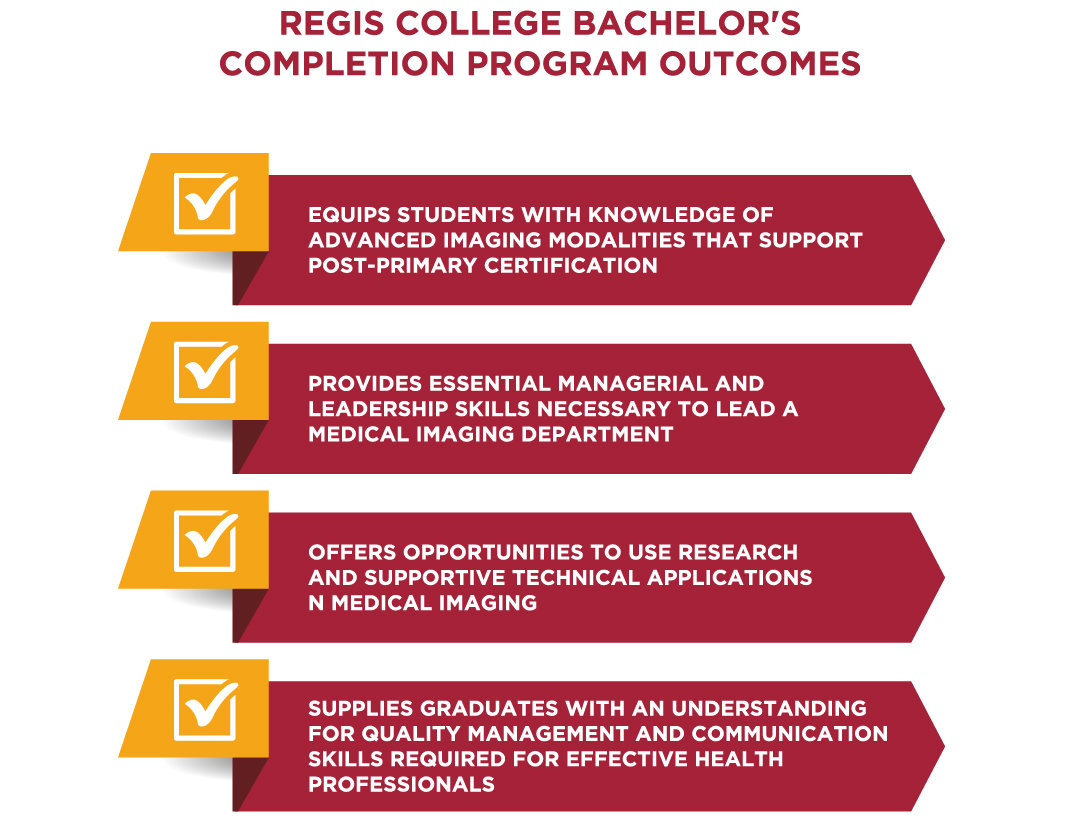Imaging technologies have become an essential component in modern healthcare. Through procedures like MRIs, CT scans, x-rays, and more, doctors are able to diagnose medical conditions and monitor changes in the body. The applications of medical imaging technology is rapidly expanding, and, as a result, the healthcare industry needs more technologists to fill crucial roles.
If you’re looking to break into the field of medical imaging, you’ll need a better understanding of the skills needed to obtain a lucrative position, with a strong job outlook, in this thriving field
Types of Medical Imaging Skills
Imaging technologists are responsible for handling both complex imaging equipment and patient care, meaning they need a wide range of proficiencies. Here are the various types of medical imaging skills you should try to acquire before applying to technologist positions.
- Examination skills: Medical imaging technicians have multiple points of contact with patients, but most are during the examination period. They are responsible for positioning and instructing people throughout a procedure, as well as communicating the radiation safety protocols. Therefore, technicians need to be comfortable with the examination process to ensure the patient is prepared.
- Technical/hard skills: Operating, maintaining, and calibrating radiographic equipment is a core part of any diagnostic imaging job. Seasoned professionals may also instruct others on using new equipment or evaluate which technologies to use.
- Medical knowledge: An understanding of human anatomy and physiology is essential for conducting safe procedures and evaluating images accurately. Radiologic technicians must also be able to assess risk factors and adapt to patient needs.
- Soft skills: Working with people of all ages and backgrounds requires empathy, communication skills, attention to detail, and an even temperament when patients are distressed. The most successful medical imaging professionals need these traits in order to keep their patients comfortable and relaxed.
What type of skill is more important to obtaining the right medical imaging position? While it’s hard to pinpoint the most valuable sector of skills to employers, there has been a significant shift in what’s included in job posting requirements from 2020 to 2022. According to analysis of labor insights data, some of the biggest skills that have grown in popularity among employers are soft skills (e.g., communications, customer service, troubleshooting, and decision-making).

Source: Lightcast 2022
Eight High-Demand Skills in Medical Imaging You Need to Break Into the Field
Medical imaging is a very expansive role in healthcare. Although soft skills are becoming a growing requirement for certain positions, technical/hard skills are just as important to this field. Here’s the top skills needed to stay competitive in today’s diagnostic imaging job market.
Technical/Hard Skills
1. Radiology
Many, but not all, diagnostic imaging methods use radiation. Therefore, knowledge of radiology equipment and techniques is a must in the field. In fact, according to a labor insights data report, at least 50 percent of current medical imaging job descriptions list knowledge of radiology as a top requirement.
For example, radiologic technologists conduct procedures such as X-rays, fluoroscopy, and mammography to produce quality images of internal organs and skeletal systems. Key radiology skills include safely administering radioactive substances, protecting patients from harmful exposure, operating and troubleshooting equipment, and understanding how to evaluate diagnostic images. Technicians trained in a wide variety of radiologic imaging procedures tend to earn higher salaries and often pursue more advanced roles.
2. Basic Life Support (BLS)
Imaging technologists who learn basic life support skills are often valued more in the medical field because they are able to respond quickly when complications arise during a procedure. BLS skills are common among care first-responders and public safety professionals who stabilize a patient experiencing an emergency, such as obstructed airways, cardiac arrest, or respiratory difficulty.
As health professionals, imaging technicians are often put in situations where quick action is needed. For example, patients undergoing diagnostic procedures may have serious health conditions that can be triggered unexpectedly. Medical technicians are often the first professional position to respond to these types of situations, therefore they must be able to stay calm and take action during an emergency.
3. Magnetic Resonance Imaging (MRI)
A magnetic resonance imaging scanner, or MRI, creates a magnetic field around the body and emits radio waves to produce images of organs, blood vessels, and soft tissues. An MRI is a noninvasive procedure that doesn’t involve radiation, but the magnetic field may be incompatible with certain patient conditions.
One of the top job titles in the medical imaging field is an MRI technologist, so it’s no surprise that this skill is highly sought after in the field. These technologists need to know how to operate the computing equipment and prepare patients in the scanning bed. They also need extensive knowledge around the risk factors of the procedure. For example, MRIs can interfere with a patient’s implanted medical device (e.g., pacemakers and stents) or patient medical history can affect the quality of the images produced. Technologists should know when to adjust for these conditions or recommend a different procedure for patient safety.
4. X-Ray Computed Tomography
Computed tomography (CT) scanning is an imaging process that involves transmitting X-rays and using a computer to convert the signals into cross-sectional images of the body. In addition to diagnosis and treatment, CT scans are used to get a detailed look at specific areas of the body in preparation for other procedures, such as radiation, surgery, and biopsies.
Job postings that are interested in these types of skills are typically CT techs. They are in charge of administering special dyes, known as contrast materials, that help the CT equipment detect different types of tissue. They’re also responsible for making sure patients are properly prepared for procedures and not wearing any metal objects that could increase radiation and reduce the quality of CT images.

Source: Lightcast 2022
Soft Skills
5. Communications
Whether in a hospital, diagnostic center, or physicians’ office, imaging technologists collaborate with various people on a daily basis. They have to consult as well as properly articulate any findings during the procedure with physicians and other health professionals. On top of that, they also need to interact with patients, easing stress or anxiety about a procedure and educating patients on all aspects of the procedure. As a result, good communication is one of the most essential soft skills technologists need to succeed in the field.
6. Customer Service
Customer service and interpersonal skills are useful for any job that involves working closely with the public. Medical imaging professionals interact with a multitude of people, so it’s important to meet their needs and answer any questions that arise. Since these positions tend to work with people of different backgrounds, it’s important to be patient and adapt to situations like language barriers or physical and mental impairments.
7. Operations
Advancing in medical imaging roles requires more involvement in the daily operations of running an imaging department. Diagnostic centers have to deal with the administrative side of communicating with referring physicians, managing imaging orders, submitting preauthorization and claims to insurers, and coordinating care and payment with patients.
In larger facilities, these roles are typically filled by dedicated office staff. However, if you decide to start or join a private diagnostic imaging center, you can benefit from building operational skills.
8. Management
Medical imaging technologies are rapidly advancing and producing fast, highly accurate results. This has led to an increased demand for noninvasive or minimally invasive diagnostic procedures. Changing technologies and procedures within the healthcare industry, combined with workforce shortages, have made it crucial for imaging professionals to have effective management skills.
To work well under potentially challenging conditions, you’ll need to be adept at managing time, resources, and stress while still providing quality patient care. Thankfully, if you plan to work in this field long term, you’ll likely develop the multifaceted experience needed to succeed in managerial roles.

Source: Lightcast 2022
How to Acquire the Right Skills for the Medical Imaging Industry
The medical imaging field is vast and lucrative, with many opportunities to cross-train for related roles. If you want a successful, stable, and flexible career, it’s important to invest in comprehensive training that will equip you with the most valuable skills to employers.
The Bachelor's Completion program in Medical Imaging at Regis College is a rewarding option for people who want to gain proficiency across multiple diagnostic imaging techniques. The program not only prepares students for the practical application of radiology examinations, but also focuses on developing communication, managerial, ethical, and leadership skills.
Although you only need an associate’s degree to work in medical imaging, obtaining a bachelor’s degree can help you develop more advanced skills and stand out to potential employers. Accredited four-year undergraduate programs incorporate more technical training, specialized coursework, and case studies to prepare graduates to take on higher roles. Earning a bachelor’s degree may also give you more flexibility in your career if you decide to transition to a different specialty down the line.

Source: Lightcast 2022
When you pursue a BS degree at Regis, you work with real technologists and work through real scenarios to be properly prepared for a real-world medical environment. If you’re interested in diagnostic imaging, consider speaking with an admission counselor or professional technologists to find out if this career path is worth exploring further.





